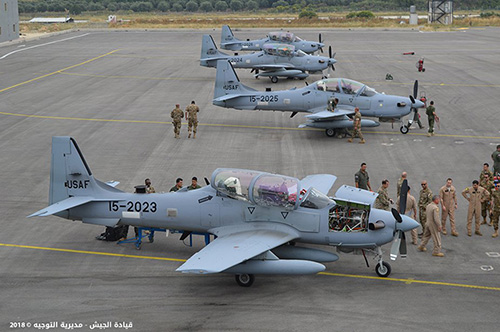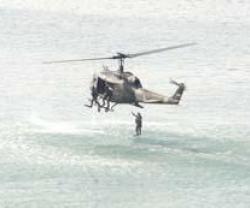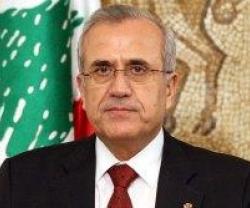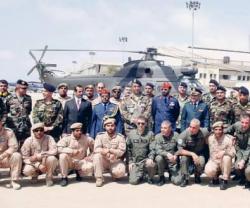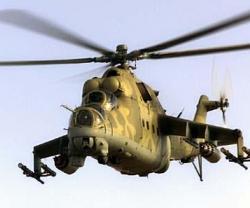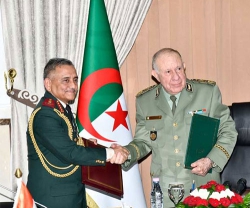The Lebanese Air Force (LAF) received on May 28 morning in Hamat Air Base near Beirut the second batch of four A-29 Super Tucano light attack aircraft offered as a donation from the US authorities, the Lebanese Army announced on its website.
The planes flew over Beirut and other areas in Lebanon, following their departure from Cyprus, the LAF said.
On 29 October 2017, Lebanon received the two first A-29 aircraft from the United States.
“The two A-29 Super Tucanos are the first of six that will be delivered over the next several months. The A-29's advanced technology provides the LAF with precision guided munitions and advanced precision strike capability,” U.S. Ambassador to Lebanon Elizabeth Richard then said.
The Ambassador stressed the LAF will be able to conduct joint combined arms maneuvers with A-29 aircraft in all conditions, day and night, in a way that greatly reduces the risk of collateral damage and the danger to non-combatants.
Lebanese authorities were able to procure the aircraft through a $1 billion grant received from Saudi Arabia in 2014. The contract for the planes is expected to be completed by July 2019.
To ensure safe and effective use of the jets, the U.S. started a training program for Lebanese pilots in March 2017.
U.S. Central Command has previously said that Washington was committed to assisting Lebanon in its fight against terrorists.
CENTCOM spokesperson Major Josh T. Jacques told The Defense Post in August that the U.S. military trains and advises its Lebanese counterparts.
“U.S. advisors provide training and professional support to the Lebanese armed forces that concentrates not only on operational and tactical competencies, but also instructing the Lebanese Special Operations Forces on all the core aspects of a mission, from planning to execution,” he said.
The A-29 Super Tucano is a turboprop light attack aircraft designed for counter-insurgency, close air support, and aerial reconnaissance missions in low-threat environments, as well as providing pilot training.
The aircraft features two .50” machine guns (200 rounds each) in the wings. Five hard points under the wing and fuselage allow up to 1,500 kg of weapons for most configurations. The aircraft’s inboard stations, as well as its ventral one, are “wet” for external fuel tanks. Outboard stations allow the loading and firing of short-range air-air missiles of the AIM-9 class.
All stations can be loaded with the Mk 81 or Mk 82 (conventional or equipped with guidance kits) bombs, SBAT-70/19 or LAU-68 rocket launchers.
It is powered by a sole 1,600 SHP Pratt & Whitney PT6A-68/3 turboprop engine that incorporates FADEC (Full Authority Digital Engine Control) and EICAS (Engine Indication and Crew Alerting System) powers the aircraft.

